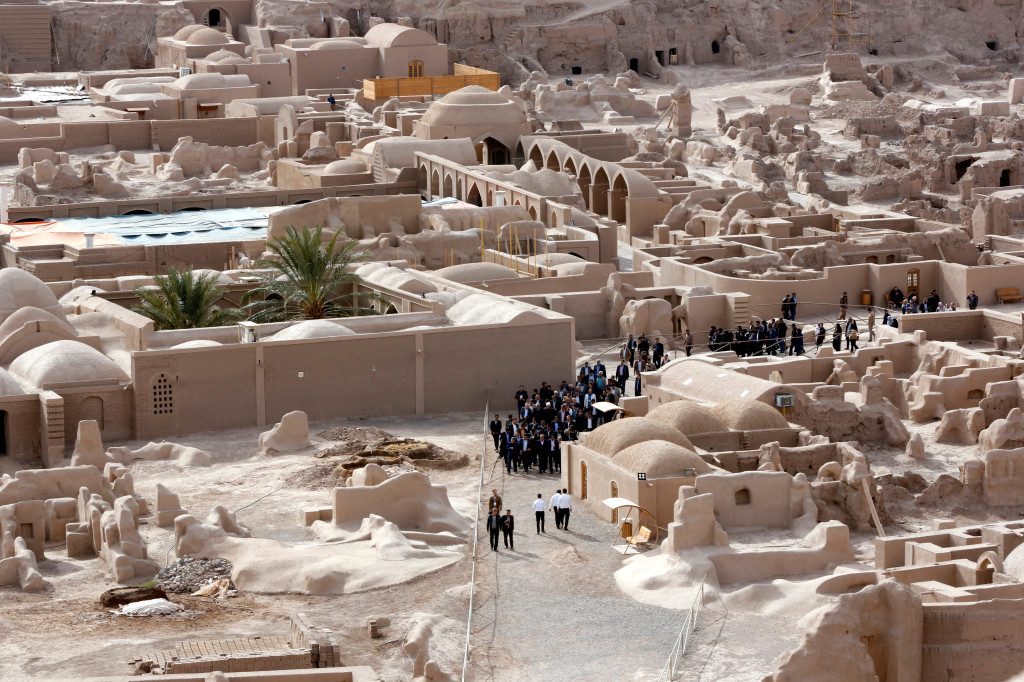[ad_1]
Tensions have rapidly escalated between America and Iran following an airstrike in Iraq on Friday which killed Qassim Suleimani, Iran’s top security and intelligence commander and the nation’s second-most powerful figure. On Twitter on Saturday night, President Trump threatened military strikes against 52 Iranian sites—which he described as being “at a very high level & important to Iran & the Iranian culture”—if any Americans or American assets in the region are targeted amid a push to expel America’s presence from the nation.
Almost immediately, Trump’s comments were criticized, with some arguing that such strikes might not be entirely dissimilar to the Islamic State’s destruction of heritage sites in Mosul, Iraq, in 2014, and in Palmyra, Syria, in 2015. On Monday, major art institutions and figures joined the outcry online.
Leaders at the Metropolitan Museum of Art in New York were among the most prominent art-world figures to respond, with president and CEO Daniel H. Weiss and director Max Holbein issuing a joint statement on Twitter.
“The targeting of sites of global cultural heritage is abhorrent to the collective values of our society,” they wrote. “Our world knows precisely what is gained from protecting cultural sites, and, tragically, what is lost when destruction and chaos prevail. At this challenging time, we must remind ourselves of the global importance of protecting cultural sites—the objects and places by which individuals, communities, and nations connect to their history and heritage.”
Thomas Campbell, the former director of the Met and current director of the Fine Arts Museums of San Francisco, took to Instagram, writing that museum directors typically “remain behind the scenes.” “But,” he continued, “when the President of the United States inverts every value system our country previously stood for, and calls for destructive attacks against cultural sites in one of the oldest civilizations of the world, you have to speak out vehemently and urgently.” He ended the post with a call to “hold high the flame of shared cultural achievements that remind us of our common humanity, across time, geography, faith and politics.”
Tristram Hunt, director of the Victoria & Albert Museum in London, tweeted that Trump’s threats “must be condemned,” adding, “This is a worrying step towards the normalization of cultural destruction as a war aim.”
James Cuno, President of the J. Paul Getty Trust, was also outspoken, stating, “It is tragic that today there would be any contemplation or rhetorical threat of further destruction of cultural heritage, particularly when what precious little remains in the world is already suffering from wanton destruction, looting, neglect, reckless overdevelopment, and climate change.”
Iran is home to 22 cultural UNESCO World Heritage Sites. Among them is the ancient Persian capital of Persepolis, the most-visited site in the nation. Iran also contains some of the most widely studied examples of Islamic architecture, including the “pink mosque” of Nasir al-Mulk in Shiraz and the medieval Mausoleum of Oljayatu.
Strikes against any cultural sites in the world were deemed war crimes by a 1954 international agreement and the U.S. Department of Defense’s Law of War Manual. A 1972 UNESCO convention similarly established protections for cultural heritage during armed conflicts. As a signatory of the 1945 agreement, the U.S. is liable to worldwide condemnation among other retaliation.
The Association of Art Museum Directors (AAMD), an organization representing 225 art museums in the United States, Canada, and Mexico, also issued a statement urging Trump not to follow through on his threats. “In this case, the region is home to unique and irreplaceable artifacts and archaeological sites, and AAMD strongly urges international engagement to protect and preserve our shared cultural heritage,” the organization wrote in a statement.
The AAMD was joined by The Archeological Institute of America, which called upon the president and U.S. Department of Defense “to protect civilians and cultural heritage in Iran, and to reaffirm that U.S. military forces will comply only with lawful military orders.”
The World Monuments Fund stated, “From Syria to Afghanistan, Mali to Yemen, we have all witnessed far too many intentional acts of destruction of irreplaceable treasures over the last decades,” adding, “At WMF, we have dedicated our lives to working with local communities around the world to protect and restore humanity’s treasures. Today we call on people and governments everywhere to stand up for the protection of our shared heritage. We cannot continue to let political differences threaten one of the few things that serve to unite us all – our shared global heritage.”
A statement denouncing military action was also issued by the American Alliance of Museums. The International Council of Museums and the International Council on Monuments and Sites released a joint statement, saying, “Iran is home to 24 UNESCO World Heritage Sites of great cultural and natural importance—not only to Iranians, but to humanity and its collective memory.”
[ad_2]
Source link

